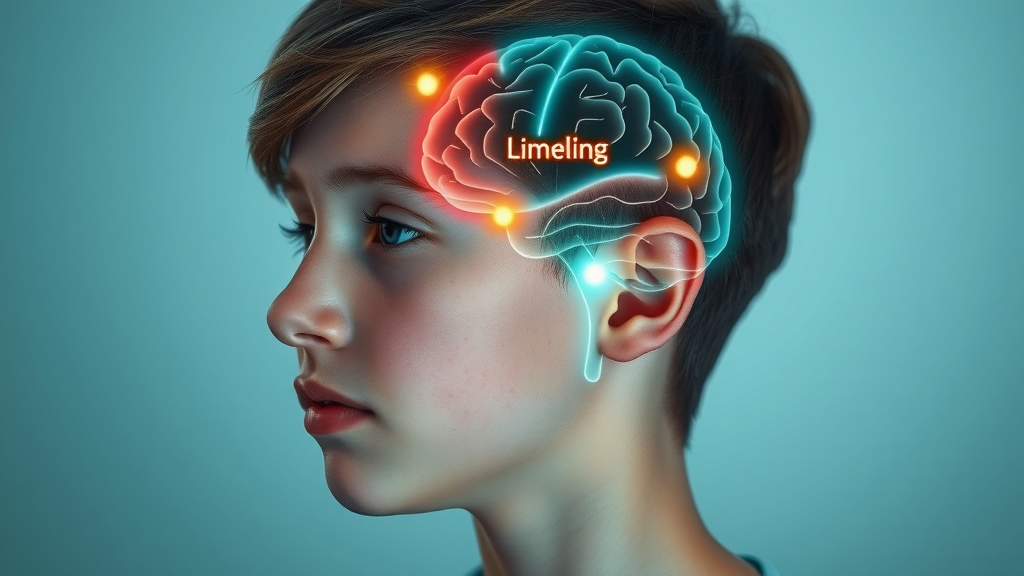Did you know that nearly 50% of all lifelong mental health conditions begin by age 14, according to the American Psychological Association? Adolescence is more than just a rollercoaster of mood swings—it’s a critical window that shapes your child’s emotional, cognitive, and social future. As a parent, understanding adolescent psychology is the single-most impactful step you can take to help your teenager navigate life’s challenges, unlock their strengths, and build resilience for adulthood. This guide breaks down the complexities of adolescent development, mental health, and peer influence, equipping you with research-based insights to support your child every step of the way.
A Startling Look at Understanding Adolescent Psychology
Understanding adolescent psychology means recognizing the interconnected changes that define the transformation from childhood to adulthood. The teenage years are marked by a unique blend of physical development, emotional turbulence, cognitive growth, and evolving social roles. These years also pose challenges—teens face increased risk for mental health conditions, are highly influenced by peer groups, and experience significant emotional and cognitive changes. For parents, having a grounded view of adolescent development is crucial, not only for responding to issues like risk-taking behaviors or eating disorders but also for supporting healthy identity development and mental wellness.
As the demands of high school and the pressure from social media intensify, adolescents are prompted to make complex decision making choices before their brains are fully developed. Peer pressure and the desire for independence can sometimes mask early warning signs of mental health conditions. With guidance rooted in an understanding of adolescent psychology, parents can distinguish between typical teenage behavior and patterns that signal a developing problem. This section will ground you in the fundamentals, preparing you for the practical strategies that follow.

Why Understanding Adolescent Psychology Matters for Parents
When parents take time to understand adolescent psychology, they unlock the ability to be supportive anchors during a period of rapid transformation. Teens are often misunderstood, and attributing their actions solely to hormones or rebellion overlooks the real underlying changes in their brain, body, and social environment. Becoming familiar with how these shifts affect decision making, risk-taking behaviors, and emotional regulation leads to improved mental health outcomes and closer family relationships.
Furthermore, research by the American Psychological Association highlights that responsive parental support plays a critical role in helping adolescents develop healthy coping skills, avoid mental health conditions, and manage stress related to peer group dynamics and school pressures. The adolescent years are foundational, setting the stage for young adulthood. The more you know, the better equipped you’ll be to guide your teenager toward positive mental health and a strong sense of identity.
What You’ll Learn About Understanding Adolescent Psychology
Gain insight into mental health and adolescent development
Recognize signs of common health conditions in teens
Learn how peer groups and emotional changes affect your child
Understand stages and principles behind adolescent psychology
Discover tips for supporting your teenager’s social and emotional wellbeing

Defining Adolescent Development: The Backbone of Understanding Adolescent Psychology
The Core Concept of Adolescent Development
Adolescent development describes the multifaceted changes teenagers experience as their bodies, minds, and relationships mature. This stage bridges childhood’s dependence and the autonomy of adulthood. Adolescents undergo physical milestones such as puberty, social challenges as they navigate new roles, and cognitive changes affecting how they learn and solve problems. Each domain—physical, cognitive, social, and emotional—interacts to shape overall development. According to the American Psychological Association, effective support during this time helps young people build the foundation for adult success and mental health.
A thorough understanding of adolescent development allows parents to remain patient, empathetic, and attuned to their teen’s evolving needs. Recognizing that behaviors such as mood swings, shifting friendships, and budding independence are normal features can help families reduce conflict and increase emotional support during these formative years.
Physical Development and Its Impact on Mental Health
Puberty sparks dramatic physical development, from growth spurts and changing body shapes to new hormone balances. These changes impact self-esteem and body image, influencing behavior and mental health. Studies have found that early or late puberty can be a risk factor for mental health conditions like anxiety and depression. Additionally, as teenagers compare themselves to their peer groups, they may experience increased self-consciousness or social withdrawal, further affecting their emotional development.
As a parent, acknowledging the connection between physical changes and mental health can make a crucial difference in supporting your child. This means offering reassurance, open dialogue, and age-appropriate information about physical development while monitoring for warning signs of health conditions such as eating disorders or sudden changes in mood.

Understanding Social Development in Adolescence
Social development in adolescence involves forging identity outside the family unit and finding one’s place in peer groups. Friendships become increasingly important, and acceptance by peers can powerfully impact a teen’s self-worth and risk behaviors. Teens learn to navigate social norms, manage peer pressure, and develop key interpersonal skills. The influence of social media and high school dynamics can amplify positive social growth but also introduce new challenges such as cyberbullying or exclusion.
Parental support is critical during this stage. By encouraging healthy social interactions and discussing the role of peer group influence, parents help adolescents develop resilience to negative experiences and reinforce healthy boundaries. Active guidance ensures social development leads to positive outcomes and minimizes the risks associated with unhealthy peer relationships.
Cognitive Development: Changes in Thinking and Behavior
Cognitive development in adolescence is marked by the ability to think abstractly, reason logically, and consider hypothetical situations. Teens start to form their own opinions, challenge authority, and establish personal values—key steps toward independent decision making. However, their brains, especially the prefrontal cortex responsible for judgment and impulse control, are not fully developed, which can lead to risky choices and an underestimation of consequences.
Understanding these transformations can help parents practice patience when teens question rules or make mistakes. Supporting cognitive development involves encouraging critical thinking, fostering open communication, and modeling responsible decision making. This approach helps teens safely explore their independence and develop essential life skills.

Emotional Development and Navigating Emotional Change
Emotional development during adolescence is characterized by heightened emotions, mood swings, and the discovery of new feelings. As hormonal changes intensify emotional responses, teens may struggle with self-regulation and identity development. Emotional change is common, but without a supportive environment, some young people may develop anxiety, depression, or other mental health conditions.
Building emotional intelligence is as crucial as academic learning. Parents can help their teens by modeling healthy emotional responses, validating their feelings, and providing a safe space for open conversations about difficult topics like stress, loneliness, or peer pressure.
Expert insight: 'Understanding adolescent psychology is vital because this stage sets the trajectory for adult mental health and personality.'
Exploring Mental Health in Adolescent Development

Mental Health Conditions Affecting Adolescents
Adolescence is a vulnerable period for developing mental health conditions. Rates of depression, anxiety, and eating disorders are on the rise, according to the American Psychological Association. Early adolescence, when teens first encounter new academic and social pressures, is a critical window for prevention. Common mental health conditions include attention-deficit/hyperactivity disorder (ADHD), major depressive disorder, and anxiety disorders—each presenting distinct challenges for cognitive and emotional development. Often, health conditions overlap, and teens experiencing one concern are more likely to face co-occurring challenges.
Spotting the early signs and seeking professional support is essential. Symptoms vary widely but may include withdrawal from friends, poor academic performance, emotional outbursts, or sudden changes in sleeping and eating patterns. As a parent, staying attuned to these shifts is a protective factor in your teen’s mental health journey.
Common Health Conditions and Warning Signs
Recognizing the warning signs of health conditions during adolescence is key to early intervention and prevention of long-term consequences. Behavioral changes—such as withdrawal from family activities, persistent sadness, extreme mood swings, unexplained aches, or sudden drops in grades—often flag mental health conditions such as depression, anxiety, or even early eating disorders. Risk factors include a family history of mental illness, chronic illness, negative school experiences, or overwhelming life transitions. Girls may show symptoms of eating disorders earlier, while boys may display behavioral problems or aggression.
Monitoring the presence of known risk factors, such as high academic pressure, bullying, social isolation, or significant life changes like parental divorce, enables parents to intervene before minor issues escalate into serious conditions. Open communication lines with adolescents encourage them to share struggles and seek support when needed.
Prevalence of Adolescent Mental Health Conditions |
||
Condition |
Estimated Prevalence (%) |
Typical Warning Signs |
|---|---|---|
Depression |
13 - 20% |
Persistent sadness, hopelessness, withdrawal |
Anxiety Disorders |
10 - 15% |
Excessive worry, irritability, physical symptoms |
Eating Disorders |
4 - 8% |
Drastic weight changes, preoccupation with food/body |
ADHD |
8 - 10% |
Inattention, impulsivity, academic struggles |
How to Support Adolescent Mental Health at Home
Fostering a supportive environment at home empowers adolescents to face challenges and strengthens their mental health. Start by establishing open lines of communication—ask open-ended questions, listen without judgment, and assure your teen that feelings are valid, even the tough ones. Educate yourself about common mental health conditions and warning signs, discuss coping strategies, and normalize seeking help from health professionals.
Encourage healthy routines, including regular sleep, balanced nutrition, and physical activity, all of which are proven to benefit both physical and emotional development. Connect with your teen’s school to support academic and social needs, and don’t hesitate to consult a mental health professional if you observe persistent signs of distress or unhealthy coping mechanisms. Your involvement can make all the difference.
Peer Group Influence and Social Development in Adolescents
Role of Peer Groups in Understanding Adolescent Psychology
Peer groups become a central influence during adolescence, often shaping interests, attitudes, and values. Teens look to their peers not only for companionship but also for social validation and acceptance. This dynamic influences everything from high school choices to risk-taking behaviors, and can include both positive outcomes (support, friendship, healthy competition) and negative risks (peer pressure, experimentation with substances).
For parents, understanding the dual nature of peer group influence is important. Encouraging positive friendships and guiding teens on filtering out negative influences helps strengthen social development while minimizing harm. Open conversations about the impact of peer pressure empower adolescents to make independent, value-driven decisions.

Balancing Family and Peer Relationships
During adolescence, navigating the balance between family bonds and peer relationships can be challenging. As adolescents gravitate toward friends for support and identity affirmation, parents may feel left out or worry about losing influence. However, research affirms that strong family connections remain a key protective factor against negative peer influence and mental health conditions.
Stay involved in your teen’s life through shared activities, regular check-ins, and reinforcing family traditions. Encourage your teen to bring friends home and get to know their peer group. Demonstrating respect for your teen’s growing independence, while maintaining open dialogue and firm boundaries, can help maintain closeness and guide healthy relationship choices.
Understanding Cognitive Development and Risk-Taking Behaviors

Cognitive Development Changes During Adolescence
The teenage brain is a work in progress. Cognitive development during adolescence includes advances in reasoning, planning, and complex problem-solving. However, the prefrontal cortex—which governs impulse control, judgment, and long-term planning—is one of the last brain regions to fully develop, sometimes not maturing until the mid-twenties.
This means adolescents may approach decision making with more emotion than logic, and are more susceptible to risk-taking behaviors when with peers. Recognizing this developmental timeline helps parents set appropriate expectations, reinforce boundaries, and offer the scaffolding teens need during challenging moments.
Risk-Taking Behaviors: Why They Happen and How to Address Them
Taking risks is a normal part of growing up—teens are wired to seek novelty and challenge. While risk-taking can encourage growth, creativity, and confidence, it also exposes adolescents to safety concerns, substance use, and other hazards. The presence of a peer group often amplifies risky behaviors, as teens crave acceptance and are more likely to act impulsively in social settings.
Parents can address risk-taking behaviors by fostering trust, modeling responsible behavior, and keeping communication lines open. Rather than simply forbidding certain activities, discuss the reasons behind rules and help adolescents anticipate consequences. Equip your teen with problem-solving skills and resources to make safe choices even under peer pressure.
Emotional Development: Navigating Emotional Change in Adolescence
Identifying Emotional Changes in Your Teen
Emotional change is a hallmark of adolescent development. Teens often experience strong feelings of joy, anger, confusion, or sadness, sometimes within hours. While mood swings are normal, persistent changes—such as irritability, withdrawal, or extreme reactions—may signal deeper issues like depression or anxiety. Parents should be alert for patterns that last more than two weeks, especially if they impact school, friendships, or family life.
By creating a supportive environment and recognizing early signs of emotional distress, families can intervene before mental health conditions develop. It is essential for parents to validate their teen’s feelings, avoid minimizing their experiences, and gently encourage them to express what’s going on beneath the surface.

Helping Your Teen Cope With Intense Feelings
Adolescents sometimes feel overwhelmed by strong emotions. Teaching teens strategies for self-regulation—including mindfulness, journaling, physical activity, and seeking support from trusted adults—builds lifelong mental health resilience. Parents serve as important role models; openly sharing how you handle stress or disappointment demonstrates healthy coping behaviors your teen can emulate.
If intense feelings persist or interfere with daily life, don’t hesitate to seek help from a school counselor, health professional, or therapist. Early intervention is key for preventing long-term mental health conditions, and equipping teens with emotional regulation skills is as critical as supporting their academic achievement.
Quote from adolescent psychologist: 'Emotional regulation skills are as important as academic achievement during the teenage years.'
Understanding Eating Disorders and Related Health Conditions in Adolescence
Eating Disorders: What Parents Should Look For
Eating disorders, including anorexia nervosa, bulimia nervosa, and binge-eating disorder, are serious health conditions that often emerge during the adolescent years. Warning signs include sudden weight loss or gain, compulsive exercise, food avoidance, eating in secret, or extreme concern about body size and shape. The increased focus on appearance during adolescence—driven by peer group standards and social media—heightens susceptibility, and girls are at particular risk.
Early recognition is crucial. Don’t ignore drastic changes in eating patterns, negative self-talk about weight, or withdrawal from family meals. These may signal the onset of an eating disorder or other distress related to ongoing mental health challenges.

Addressing Mental Health and Eating Disorders Simultaneously
Eating disorders rarely occur in isolation—they are often linked to anxiety, depression, or past trauma. A multidisciplinary approach involving family, school staff, and health professionals is essential for recovery. Open communication with your teen, free of blame or judgment, helps them feel safe sharing their struggles. Support can include scheduled regular check-ins, fostering a positive body image, and reinforcing non-appearance-based strengths.
Parents should collaborate with a health professional to create a care plan tailored to the teen’s needs, ideally involving a mental health therapist, nutritionist, and, if needed, medical monitoring. Early intervention in both mental health and eating disorders gives adolescents the best chance at full recovery.
From Adolescence to Young Adult: Monitoring Ongoing Development
What Changes as Adolescents Become Young Adults?
As teens transition into young adults, they face new challenges—greater academic autonomy, work responsibilities, and changing relationships. Cognitive skills continue to sharpen, emotional maturity deepens, and identity becomes more defined. While some health conditions may resolve, others require continued support into adulthood.
This stage is an opportunity for self-discovery and growth. Parents can encourage independence by gradually allowing more responsibility, supporting higher education choices, and discussing future plans. It is also a time to continue monitoring mental health and wellness, offering guidance as needed while respecting your young adult’s growing autonomy.
Supporting the Transition to Adulthood: Parental Guidance
Supporting the move from adolescence to young adulthood means shifting your role from director to consultant. Foster open dialogue, respect boundaries, and provide a safety net—but avoid dictating choices. Prepare your teen for challenges such as managing finances, living independently, or forming new social connections. By being a stable presence, you help your young adult navigate setbacks and celebrate successes.
Parental support remains crucial in these years. Stay informed about your child’s mental health, know when to step in, and don’t hesitate to connect them with resources or health professionals as needed. This ongoing involvement ensures a healthy journey into adulthood.

Lists: Tips for Parents to Support Understanding Adolescent Psychology
Establish open communication: Ask open-ended questions and really listen.
Educate yourself about adolescent development: Stay up-to-date on changes and challenges your teen may face.
Encourage healthy peer relationships: Support positive friendships and help teens navigate peer pressure.
Monitor for signs of mental health or eating disorders: Recognize early warning signals for timely intervention.
Be patient and supportive through cognitive and emotional changes: Offer guidance, not judgment, as your teen matures.
Key Takeaways: Summarizing Understanding Adolescent Psychology
Adolescent development involves interconnected changes
Mental health and health conditions are critical to adolescent wellbeing
Cognitive and emotional development shape behavior and personality
Peer groups and social development play a significant role
Early recognition and communication help prevent crises
People Also Ask About Understanding Adolescent Psychology
What are the 5 principles of adolescent development?
The five principles are: physical growth and development, cognitive maturation, emotional change, social development, and the emergence of identity. Each is crucial for holistic adolescent growth.
What are the 4 stages of adolescence?
The four stages are: early adolescence (10-13), middle adolescence (14-17), late adolescence (18-21), and young adult transition. Each stage involves distinct cognitive, emotional, and social developments.
What is the concept of adolescent psychology?
Adolescent psychology studies the cognitive, emotional, social, and physical changes during adolescence, emphasizing the impact of these changes on mental health, behavior, and identity formation.
What are the 7 characteristics of adolescence?
The seven characteristics include: rapid physical growth, the onset of puberty, development of abstract thinking, quest for independence, identity formation, heightened emotions, and increased importance of peer group dynamics.
FAQs About Understanding Adolescent Psychology
How can parents encourage better emotional development in adolescents?
Encourage open expression of feelings, model healthy emotional regulation, validate your teen’s experiences, and provide opportunities for safe emotional risk-taking. Responding calmly and supportively, even during emotional outbursts, teaches invaluable coping skills.What are early warning signs of eating disorders and mental health conditions in teens?
Warning signs may include dramatic changes in eating habits, obsession with body size, withdrawal from friends, sudden academic decline, sleep disruptions, or intense mood swings. Seek support from a health professional if you notice these patterns lasting more than two weeks.How much do peer groups influence adolescent behavior?
Peer groups are a major factor in adolescent decision making, risk-taking, and identity formation. While they can provide support, they can also pressure teens into unhealthy behaviors. Encourage positive peer relationships and discuss ways to deal with peer pressure.What role does school play in adolescent social development?
School environments offer key opportunities for friendship, conflict resolution, teamwork, and leadership. Teachers and counselors can support both academic and social needs, helping teens navigate peer group dynamics and develop confidence.
Conclusion: The Ongoing Journey of Understanding Adolescent Psychology
Empowering Parents to Guide Adolescents Towards Healthy Adult Lives
Your commitment to understanding adolescent psychology empowers both you and your teen. Keep learning, stay engaged, and offer unwavering support as they grow into healthy, resilient adults.
A short, informative video explaining the five key warning signs that a teen might need mental health support. Includes visual examples, expert commentary, and actionable advice for parents.
 Add Row
Add Row  Add
Add 





Write A Comment